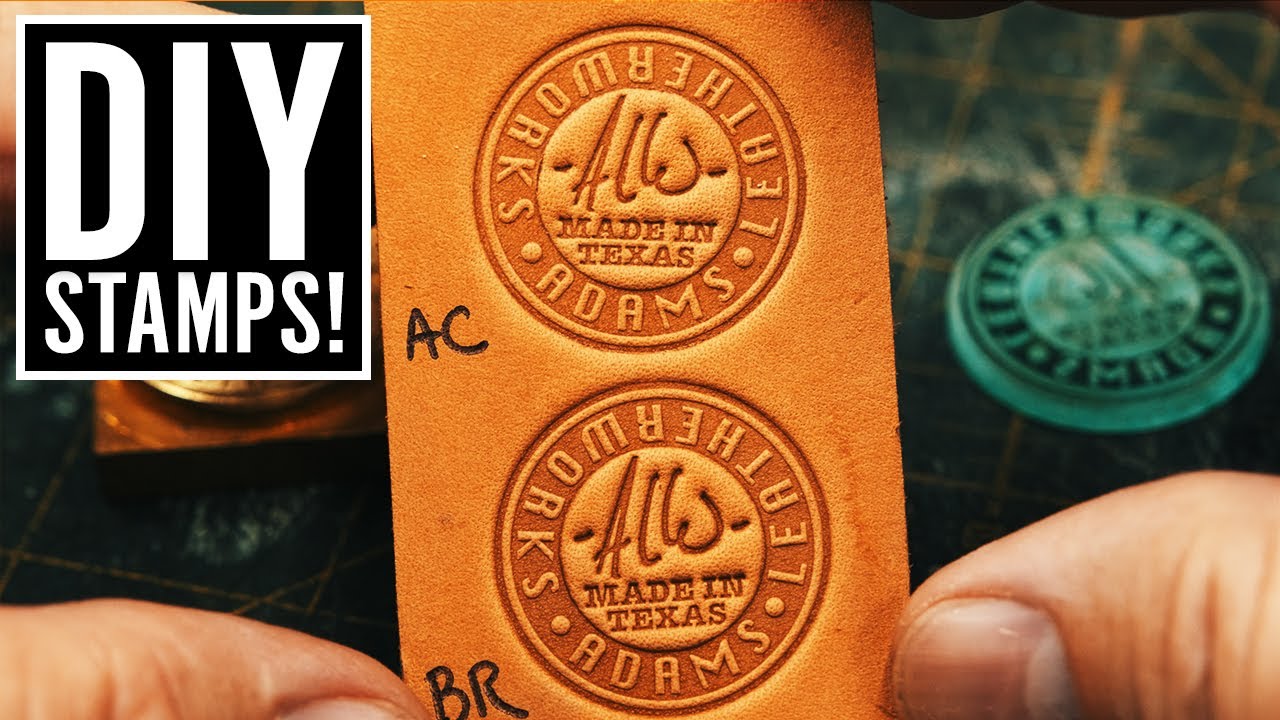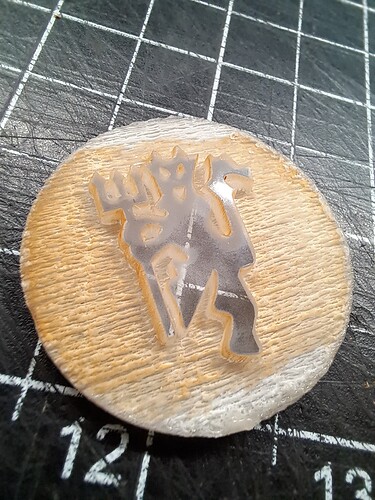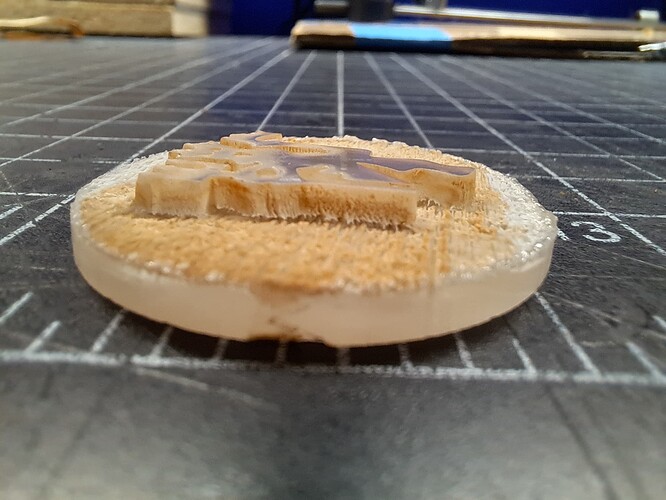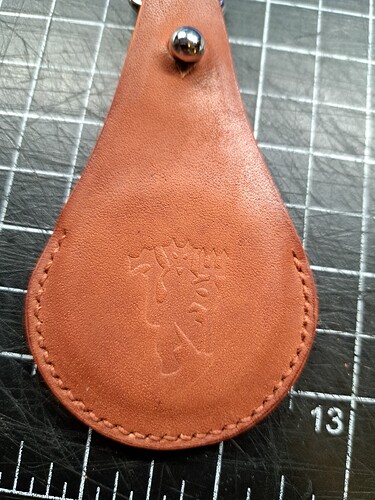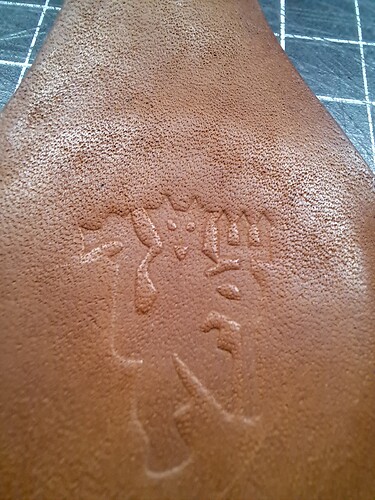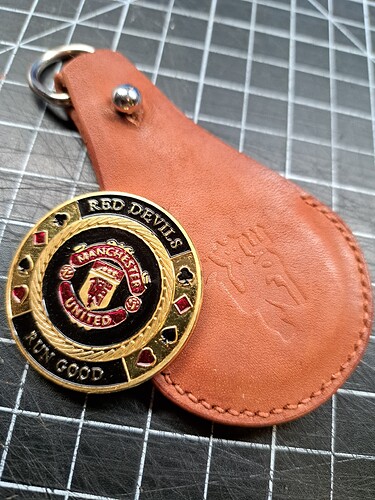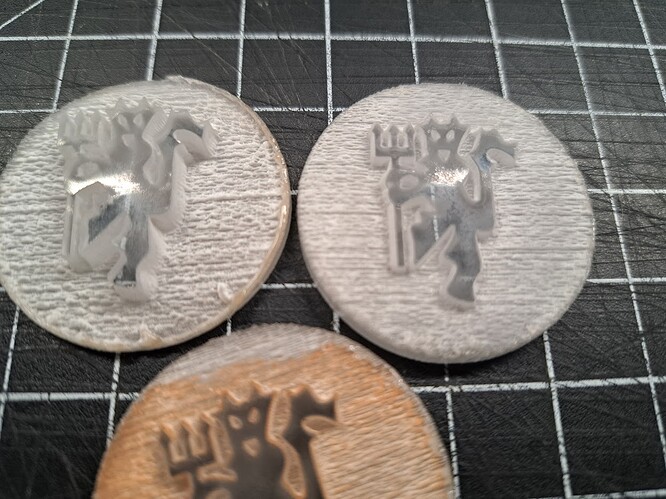I have done leather stamps quite well. The wood/plywood Fill is an option, but not the one I’d recommend most. It should be a greyscale image mode.
What I did was like 1" thick acrylic, I drilled and tapped it about 2/3rds of is thickness and screwed in a common hex-head carriage bolt as a handle. You can use a mallet, or a regular hammer works too, the hex head is easy to hit. A press stamp would of course be constructed differently.
I would think that acrylic would need to be thicker than 1/8" so it won’t crack under pressure. Also, if you raster more than about 2/3rds through acrylic, the low spots may start to melt and sag. I did some where its back had sagged into the honeycomb cells and taken the impression. I’d go with 1/4" acrylic.
The shape of the swath cut by the beam is not a flat bottom. It won’t matter on wood, but a smooth bottom on acrylic may need a smaller line interval to get the bottom smooth and create small features.
Depth of cut is a constant times beam power (let’s just assume it’s fixed at 100% power), divided by speed, and then divided by line interval. So half the line interval is twice the passes which yields twice the depth. If you want shallower, I’d say still keep the line interval low, like 0.1mm or even 0.05mm. The raster speed caps at 1000mm/s. If you ask for 2000mm/s, the controller will intervene and actually run at 1000mm/s at 50% of the power you asked for. So if you’re at 1000mm/s and the cut it still too deep, in that case you should just reduce power.
“FILL” is limited to just 2 levels here. It’s either part of the fill or not. If you want a 3D stamp, you can raster a graphic in grayscale mode. Black=full power (depth), white=minimum power (min depth).
In my experience, acrylic leather stamps done as 2-level stuff can have sharp edges that can actually cut into the leather. It would be good to round or slope these edges slightly, which can only be done in grayscale image, not Fill. This is achievable by editing the graphic with Gimp or whatever- Gaussian Blur effectively rounds edges as it creates a gradient of shades (=depths) on the border of the solid white features.
Oh yeah- this is going to go far better on Tarkin due to its high speed RF-CO2 construction. Or Pearl would be good too. I would not put it on Dorian, its HVDC-excited tube is not capable of quick power changes along the raster line.

